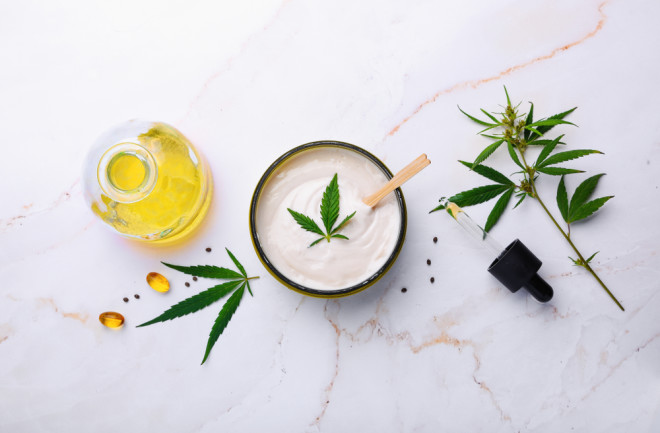Our knees ache, our backs hurt, our feet throb. Pain is one thing everybody wants gone. Unfortunately for chronic pain sufferers, many treatments come with unwanted side effects.
Opioid pain relief can cause nausea, constipation and addiction. Standard anti-inflammatory meds carry the risk of stomach issues, including bleeding. The limited options prompt many folks to try creams and lotions containing cannabidiol (CBD).
Researchers have confirmed that CBD works against pain and inflammation, and they’re still finding new ways that it works in the body. They're also working to nail down the proper dose of topical CBD needed for pain relief. For example, the dose that brings relief to achy joints may be insufficient to effectively treat nerve damage in feet. While rubbing topical CBD onto the skin seems to work, researchers still need to figure out how much skin coverage is most effective. Some skin creams also contain menthols, which carry their own pain relief and anti-inflammatory properties, possibly masking any effect from the CBD itself.
CBD is one of the hundreds of biologically active ingredients produced in Cannabis sativa plants. Unlike THC, its psychoactive cousin that makes people feel high, CBD can ease pain without the euphoria or fear of addiction. The cannabinoid has similar effects whether absorbed through the skin or ingested by mouth.
Skin in the Game
Pain is a big driver behind opioid addiction. Many people who began treating chronic pain with prescription opioids have switched to heroin when other drugs became difficult to get. A lot of people have died as a result, says Yasmin Hurd, an addiction specialist at the Icahn School of Medicine at Mount Sinai in New York. “We have so many people in our society now experimenting with CBD to manage pain,” she says. “They are going to their clinicians and asking them for CBD.”
By the time you feel any annoying itch or prick of pain, CB1 and CB2 receptors on your skin cells have already fired off signals to help dampen those unpleasant vibes. These receptors — part of the body’s endocannabinoid system — spend their workdays responding to chemical messages that help our skin nurture a healthy balance. CBD cream bypasses the CB1 and CB2 receptors and heads straight for a neurotransmitter middleman that blocks signals for pain and itch by working through agents called anandamide and 2-AG.
Sidestepping the CB1 and CB2 receptors means that CBD can mute pain without the high sensation delivered by THC. Not only does CBD have very little interest in switching on CB1, cannabidiol can actually mute any signals sent to that receptor. Researchers looking for safer pain treatments want to take advantage of this action because it means that CBD won’t spark addiction.
So far, though, most larger scientific studies on CBD have been limited to animals. A handful of small human trials are now underway to evaluate the extent of cannabidiol's pain relief potential. Even without clinical trials, many people already use legal CBD to counteract the intense discomfort brought on by chemotherapy, and to ease pain in arthritic joints. Texas-based dermatologist Jennifer Clay Cather, who cares for people with complicated skin problems, says most of her patients come from oncology. She also owns a research company that develops CBD skin products. “We need large, evidence-based trials testing different conditions, and also testing the reproducibility of the molecule,” Cather says.
Skin Tight Data
Consumers aren’t waiting for clinical trials. But they need to remember, says Hurd, that slathering on creams can be risky, considering how the skin absorbs everything. Even topical CBD can react with oral medications.
Hurd suggests telling your doctor if you are using CBD creams because what’s absorbed into your skin will get into your bloodstream. “These are sometimes things people don’t appreciate when they are putting cream ‘only on my knee,’” says Hurd. “We also have a lot of seniors using CBD creams for arthritic pain and we need to know sooner rather than later whether this chemical cream used by so many people can indeed be effective.”
Consumers need to be educated, as well, says Cather. She works to develop a trusting relationship with her patients, so that they’ll feel comfortable talking about using CBD. She also urges her patients to find companies that document what’s actually in the bottle or jar. Asking the company about their quality control, such as how often they document ingredients, can help also vet the product.
With successful clinical trials, the future could even bring CBD pain relief with medications containing THC, or perhaps pairing CBD with opioids. But for now, says Hurd, “we are still at the beginning of really understanding these roles for CBD in pain.”




